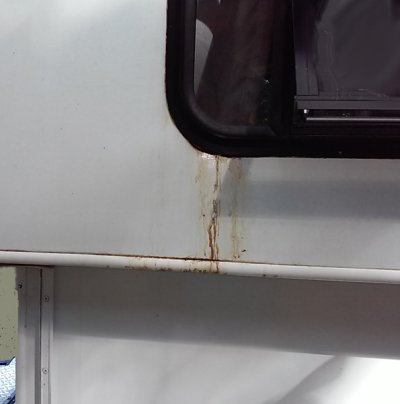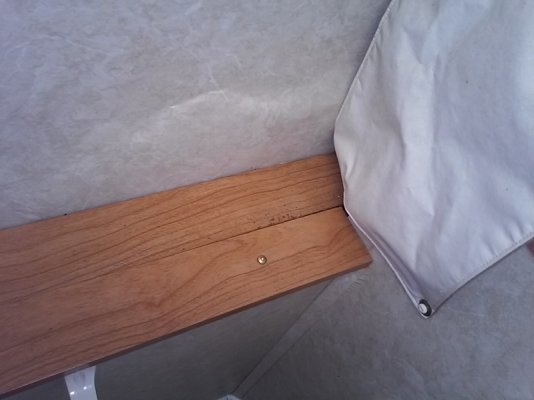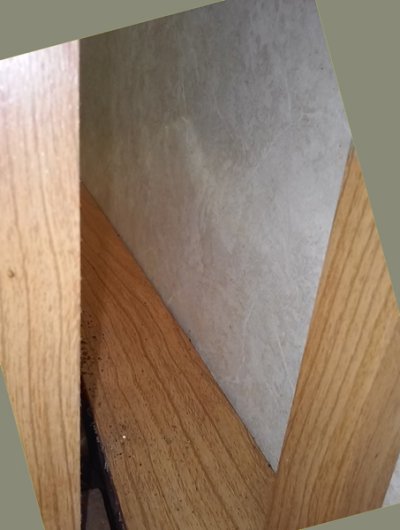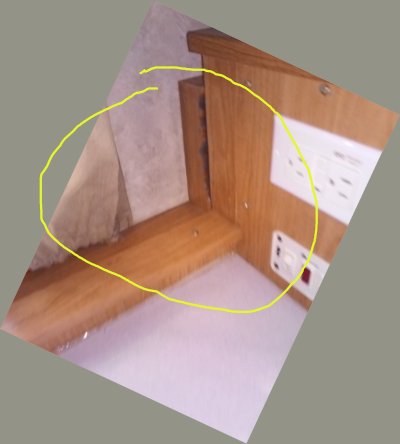Herb-in-FL
Advanced Member
- Joined
- Mar 20, 2014
- Messages
- 90
Hello:
I am wanting to get some input from long term,
and experienced Hi Lo owners,
regarding differing problems of several Hi Lo's for sale.
(This will probably be most boring, for the majority of casual readers)
Recently I had the opportunity to view 3 HiLo's
being offered for sale by very nice people.
I will keep them anonymous, except for mentioning the years and model.
Thanks to the great education I am getting from reading this forum,
I first look for any signs of water damage.
(A 2007 model which cosmetically looked clean,
had significant problems and exterior wall sagging
and bowing at the front corners and below windows,
so I ruled that one out.
It would be a major reconstruction repair project)
The two others, both 22 ft Towlites, one a 2004 and the other a 2008,
had different problems.
(For price guides on any trailer, and as a starting point,
I always go to NADA and look up the year, model,
and the high and low average price.)
Obviously the asking price on these two trailers was quite different.
Both trailers had been kept outside, and the 2008 had water damage
in the rear corner by the shower stall,
with an inside, slightly warped panel.
The 2004 had been kept out in sun, and had notable signs of oxidation deterioration
- but no water damage I could detect.
I wondered if the outside panel construction,
was different between the years 2004 and 2008?
When pushing on the outside lower area of the upper shell of the 2004,
particularly where water could collect,
I detected no give whatsoever,
and with weathering and some loss of gel coat,
I could see these panels were made of fiberglass mat.
However on the 2008, when pushing on the same areas
of the trailer's sides (eg. the bottom portion of the upper shell)
there was some "give" all way around,
and I didn't know whether that was due to a difference
in the construction material of these panels,
or whether it might be an indication of some softening of inner wood,
all way aroud.
I did not detect any bowing of the outside, on either trailer.
Also, the two differed on roof materials.
The 2008 looked new, some sort of interlocked and coated aluminum sheeting panels, I would guess.
The 2004 appeared covered with some continuous rubberized membrane
of sorts that was beginning to bubble up in some areas around roof vents
and in some of the broader flat areas of the roof,
seemed to have separated from its underlying rigid roofing;
as if delaminating. It obviously had been out in the sun a lot.
I think it was all original material.
Another factor in the 2004 trailer (12 years old now),
is that a lot of the different plastic components throughout
were beginning to break,
I think just the result of years of heat and sun exposure,
but I sensed a lot more of the little things would need replacing.
I may be totally off the mark on this point, and putting natural aging aside,
I can't help wondering if quality control and construciton materials
on early decade 2000 models may have been better
than on later 2000 decade models.
You certainly can't underestimate of wisdom of keeping a trailer either garaged,
or under the roof of a well ventilated car port.
Of all the things, it is the "give" on the side walls of the 2008,
which puzzled me most,
and some clarification on that would be most appreciated.
As always my great appreciation for this online forum knowledge base,
and for any person shedding light on the outside panel construction
of these two years.
Thank you.
GoCamp.
I am wanting to get some input from long term,
and experienced Hi Lo owners,
regarding differing problems of several Hi Lo's for sale.
(This will probably be most boring, for the majority of casual readers)
Recently I had the opportunity to view 3 HiLo's
being offered for sale by very nice people.
I will keep them anonymous, except for mentioning the years and model.
Thanks to the great education I am getting from reading this forum,
I first look for any signs of water damage.
(A 2007 model which cosmetically looked clean,
had significant problems and exterior wall sagging
and bowing at the front corners and below windows,
so I ruled that one out.
It would be a major reconstruction repair project)
The two others, both 22 ft Towlites, one a 2004 and the other a 2008,
had different problems.
(For price guides on any trailer, and as a starting point,
I always go to NADA and look up the year, model,
and the high and low average price.)
Obviously the asking price on these two trailers was quite different.
Both trailers had been kept outside, and the 2008 had water damage
in the rear corner by the shower stall,
with an inside, slightly warped panel.
The 2004 had been kept out in sun, and had notable signs of oxidation deterioration
- but no water damage I could detect.
I wondered if the outside panel construction,
was different between the years 2004 and 2008?
When pushing on the outside lower area of the upper shell of the 2004,
particularly where water could collect,
I detected no give whatsoever,
and with weathering and some loss of gel coat,
I could see these panels were made of fiberglass mat.
However on the 2008, when pushing on the same areas
of the trailer's sides (eg. the bottom portion of the upper shell)
there was some "give" all way around,
and I didn't know whether that was due to a difference
in the construction material of these panels,
or whether it might be an indication of some softening of inner wood,
all way aroud.
I did not detect any bowing of the outside, on either trailer.
Also, the two differed on roof materials.
The 2008 looked new, some sort of interlocked and coated aluminum sheeting panels, I would guess.
The 2004 appeared covered with some continuous rubberized membrane
of sorts that was beginning to bubble up in some areas around roof vents
and in some of the broader flat areas of the roof,
seemed to have separated from its underlying rigid roofing;
as if delaminating. It obviously had been out in the sun a lot.
I think it was all original material.
Another factor in the 2004 trailer (12 years old now),
is that a lot of the different plastic components throughout
were beginning to break,
I think just the result of years of heat and sun exposure,
but I sensed a lot more of the little things would need replacing.
I may be totally off the mark on this point, and putting natural aging aside,
I can't help wondering if quality control and construciton materials
on early decade 2000 models may have been better
than on later 2000 decade models.
You certainly can't underestimate of wisdom of keeping a trailer either garaged,
or under the roof of a well ventilated car port.
Of all the things, it is the "give" on the side walls of the 2008,
which puzzled me most,
and some clarification on that would be most appreciated.
As always my great appreciation for this online forum knowledge base,
and for any person shedding light on the outside panel construction
of these two years.
Thank you.
GoCamp.





